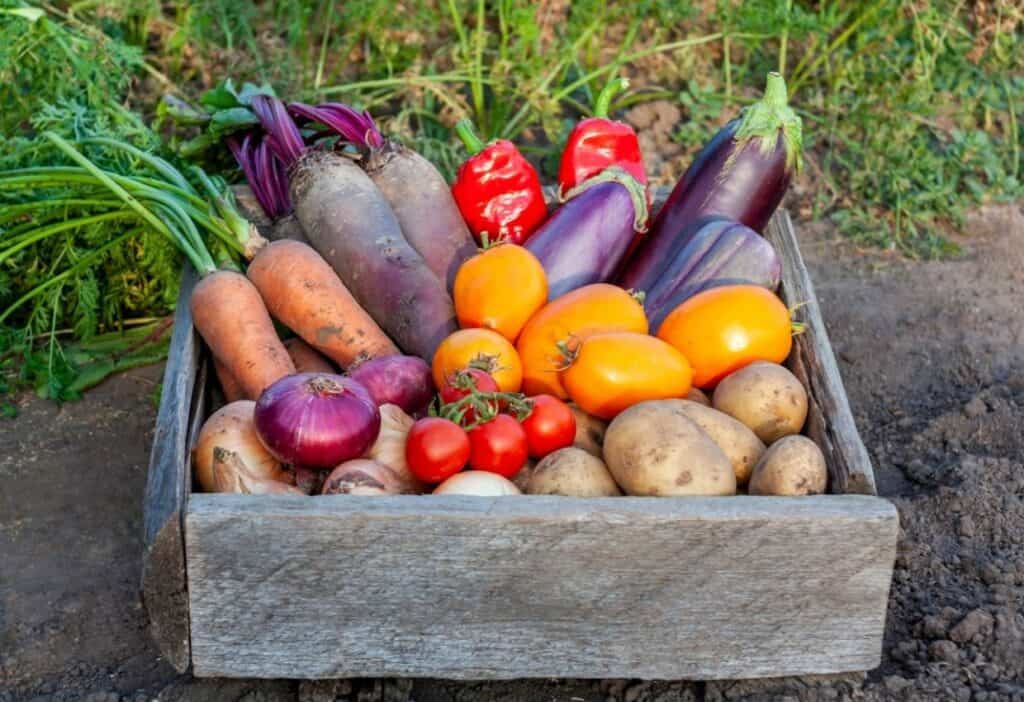The days are getting shorter and summer is winding down. Now is the perfect time to start thinking about planting a fall garden to enjoy nature’s bounty of fresh produce that you can use for healthy cooking.

Autumn gardening can be a rewarding and productive transition for beginner gardeners.
Use these tips for success when planting cool-weather crops that thrive as the temperature drops.
Choose frost-hardy vegetables
When planning your fall garden, choose vegetables that can withstand cooler temperatures. Leafy greens like kale, spinach and Swiss chard are excellent choices.
These greens tolerate frost and often taste sweeter after a light freeze. They make a great addition to your fall vegetable patch or potager garden.
Root vegetables such as carrots, radishes and beets are also well suited for fall gardening. These crops can handle cooler weather and store well for winter use.
“Know your first frost date,” says Eric Preston Stout, an award-winning Certified Master Gardener and gardening expert at TeachMe.to. “Knowing this date will save time, money and heartache when planting for the fall harvest.”
Stout says that knowing the first frost date tells you how much time remains in your particular growing season, and you can then choose crops that fit within this period.
Opt for short growing times
Another key to a successful fall garden is choosing vegetables with short growing times. Gardeners can harvest many leafy greens and root vegetables within 25 to 60 days.
This makes them ideal for a late-season garden. For example, some radishes can mature in as little as 25 days, while leafy greens like lettuce and arugula can be ready to pick in about 30 days.
Compost compost compost
Prepare the soil before planting your fall garden. Start by removing remnants of summer crops. Then, add a layer of compost or aged manure to enrich the soil.
Composting is one of Stout’s top tips for planting a fall garden that will yield a good harvest. Adding homegrown compost with organic matter can help add nutrients and warmth to help fall crops thrive.
Don’t have a home compost system? You can buy compost, but Stout says to think twice before buying ready-made compost from one of the big-box supply chains.
“Not all compost is created equal,” cautions Stout. He suggests you source compost from your local landscape supply company, which likely bags its compost daily.
“Ideally, you want your landscaper to deliver a yard or half a yard of fresh compost,” he says. Stout explains that compost temperature also plays an important role and that viable compost has an internal temperature of 95 to 105 degrees. “Any cooler or hotter, and it’s no good.”
Additionally, ensure your garden bed is well drained. Doing so will help to prevent waterlogging during the wetter fall months.
Pro tip: Cold frame gardening
Try cold-frame gardening as a technique for extending the fall gardening season. A cold frame is a simple structure that uses solar energy and insulation to create a microclimate.
Cold frames help protect plants from frost and can significantly extend the growing season. Building a cold frame can be as easy as constructing a small, raised bed or even a cinder block garden with a transparent cover made of glass or plastic. This method is perfect for growing hardy greens and can even allow for some winter harvesting.
Planting and vegetable care
When planting your fall garden, follow the recommended spacing and depth for each type of vegetable. Water your plants regularly, keeping the soil consistently moist but not soggy.
Mulching around your plants can help retain moisture and regulate soil temperature. “Mulch will provide warmth, water retention and weed management,” says Stout, adding that it’s best to use natural mulches and to avoid using rubber, black, unnatural brown or painted mulches.
As the season progresses and temperatures drop, be prepared to cover your plants with row covers or cloches if you don’t have cold frames. This helps to protect them from unexpected frosts.
Harvesting your fall garden
One of the joys of fall gardening is the extended harvest period. You can harvest many cool-season crops multiple times.
For example, you can cut leafy greens like spinach and lettuce, and they will regrow for another harvest. Root vegetables can be left in the ground until you’re ready to use them, making them convenient for winter meals.
Plant your fall garden now for a cool-weather harvest
Starting a fall garden may seem daunting at first but with the right tips and techniques, it can be a rewarding experience. By choosing frost-hardy vegetables, focusing on crops with short growing times, adding mulch and compost, and using methods like cold-frame gardening, you can enjoy fresh produce well into the autumn months.
Sarita Harbour is a long-time business and personal finance writer. She created An Off Grid Life to help readers everywhere become more prepared and self reliant.